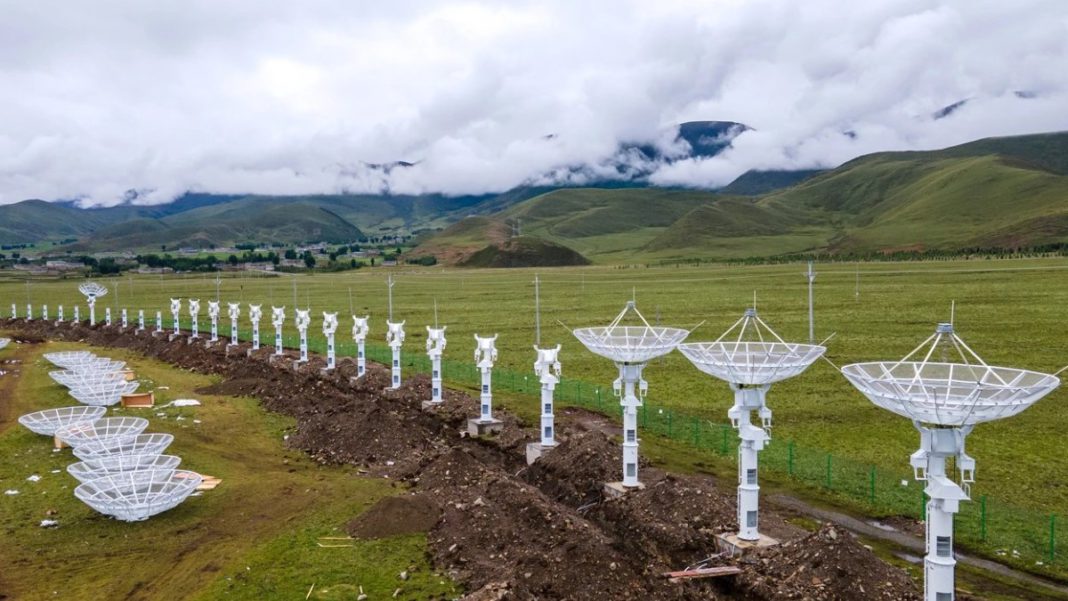CHINA: In a remarkable scientific feat, China has unveiled the world’s largest array of sun-monitoring radio telescopes, promising groundbreaking discoveries in solar research.
The Daocheng Solar Radio Telescope (DSRT) has commenced its trial operations in the breathtaking landscapes of southwest China.
Comprising an awe-inspiring 313 dishes, each boasting a diameter of 19.7 feet (6 meters), the DSRT forms a colossal circle spanning an impressive circumference of 1.95 miles (3.14 kilometers). Towering at the center of this massive ring is a 328-foot-high (100-meter) calibration tower, an engineering marvel in itself.
After undergoing six months of meticulous debugging and testing, the DSRT has demonstrated unparalleled capabilities in monitoring solar activity with exceptional precision and reliability.
On July 14, the trial operations officially commenced, marking a momentous step in China’s ambitious space science endeavors.
The ingenious concept behind the DSRT lies in simulating the effect of an immensely larger telescope, enabling scientists to achieve significantly higher resolution and sensitivity.
This is accomplished by gathering electromagnetic radiation from the sun through the multitude of dishes. These signals are then ingeniously combined, and sophisticated mathematical algorithms come into play to reconstruct intricate solar images.
The DSRT finds its home in the picturesque Daocheng County, perched on a plateau in Sichuan Province, southwest China. Its primary mission is continuous sun monitoring, focusing on observing solar flares and coronal mass ejections (CMEs).
These observations will play a crucial role in enhancing our understanding of solar behavior and its potential impacts on Earth.
However, the DSRT’s capabilities extend beyond the sun, as it promises to open new horizons in various astronomical domains. In addition to solar research, it will aid scientists in studying pulsars, fast radio bursts, and even asteroids.
By enabling monitoring and early warning methods for these celestial phenomena, the DSRT will undoubtedly be at the forefront of space research.
The National Space Science Center, operating under the esteemed Chinese Academy of Sciences (CAS), takes pride in developing this groundbreaking facility.
As part of the Meridian Project, which focused on space weather monitoring, the DSRT contributes to China’s national science and technology infrastructure.
With the DSRT now operational, China cements its position as a major player in space exploration and scientific innovation.
As it continues to push the boundaries of human knowledge, the world eagerly awaits the extraordinary discoveries that this colossal radio telescope array will unravel about our nearest star and the broader cosmos beyond.
Also Read: Unraveling the Solar Mystery: Astounding Discovery Sheds Light on the Sun’s Scorching Corona



